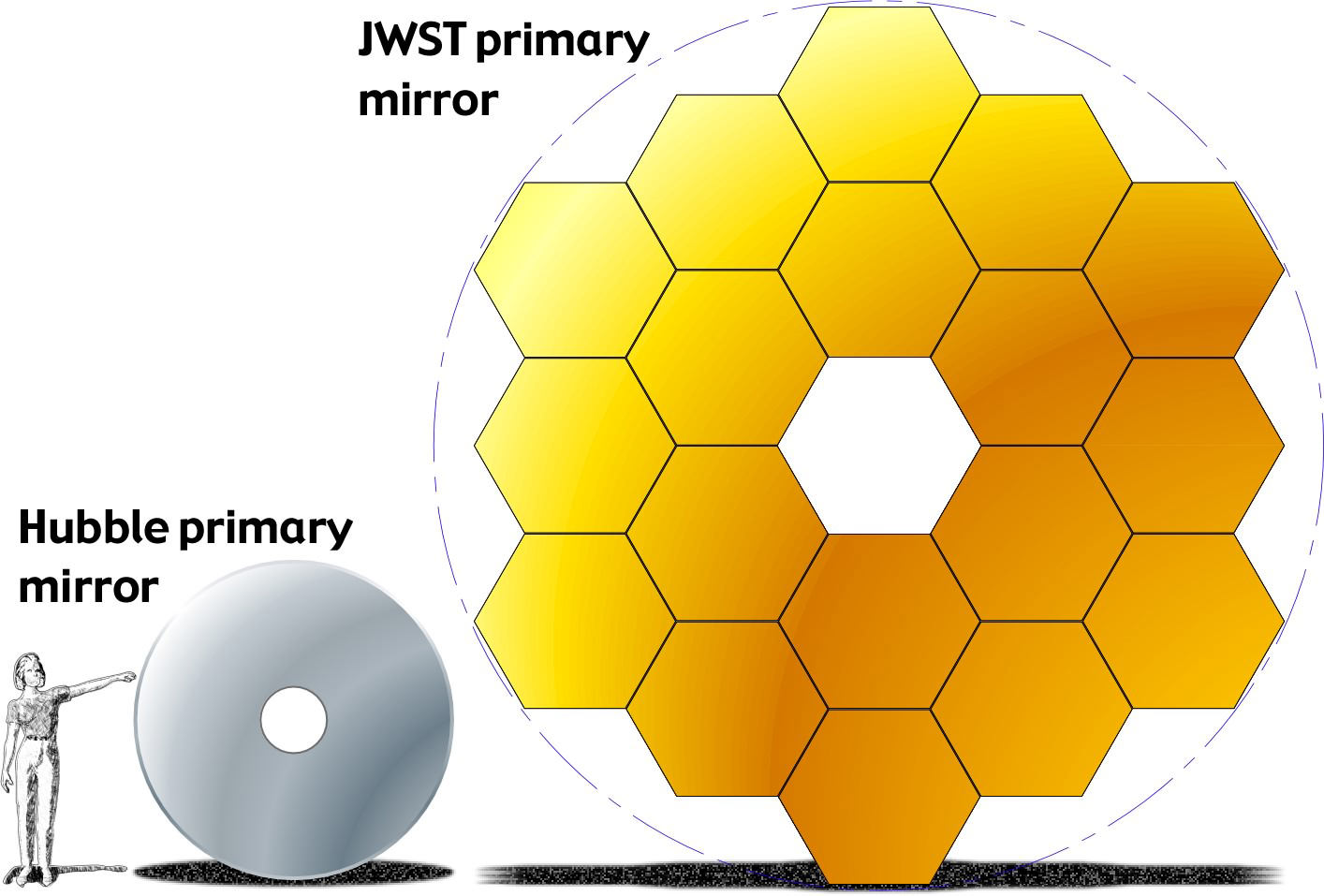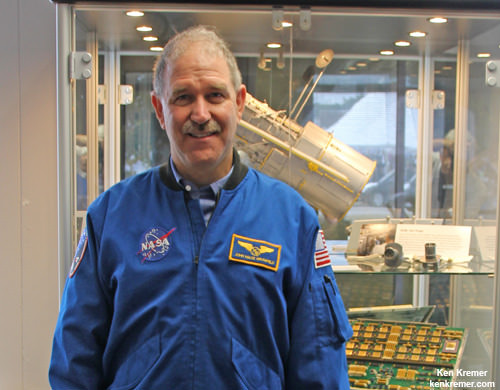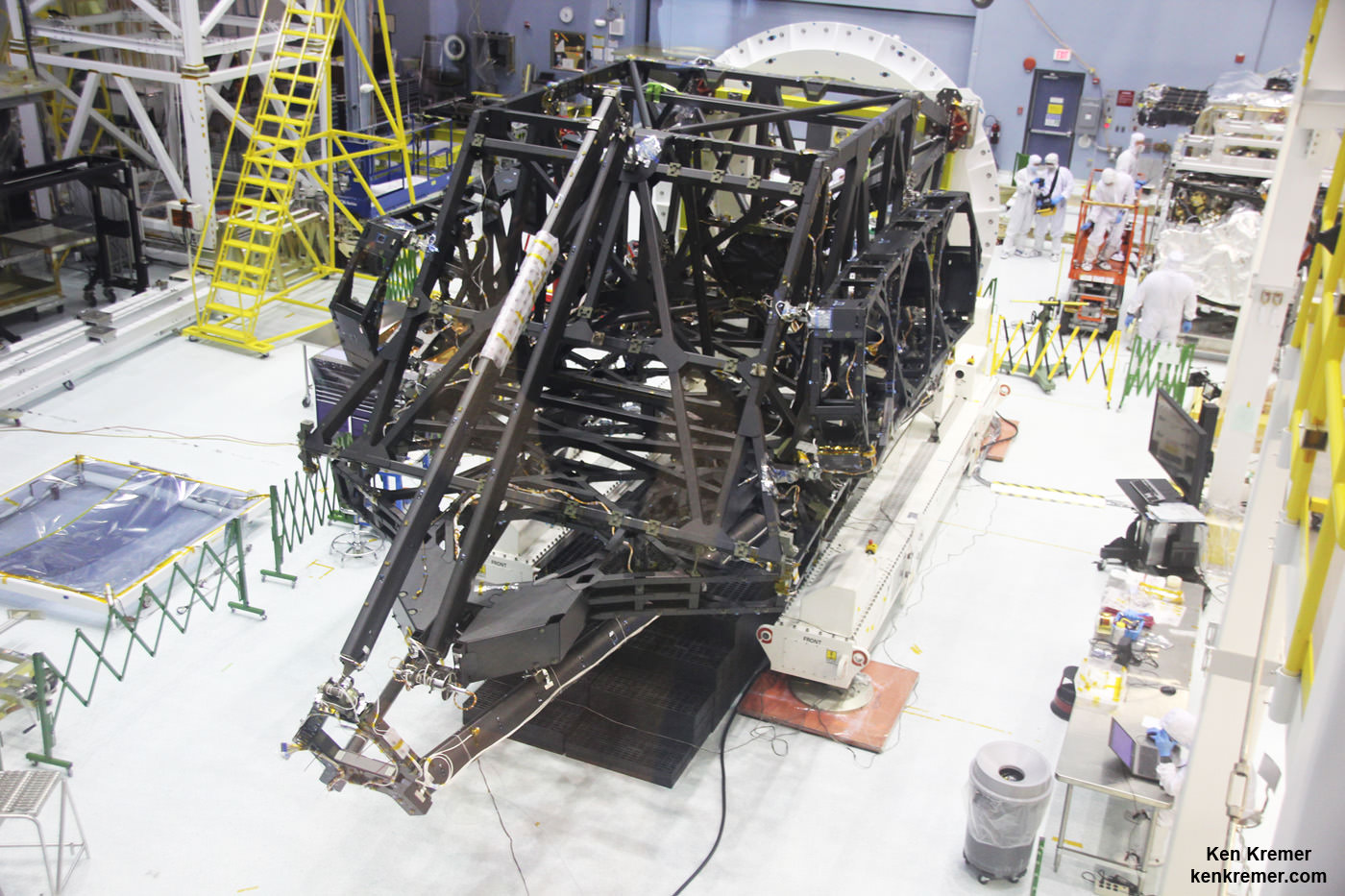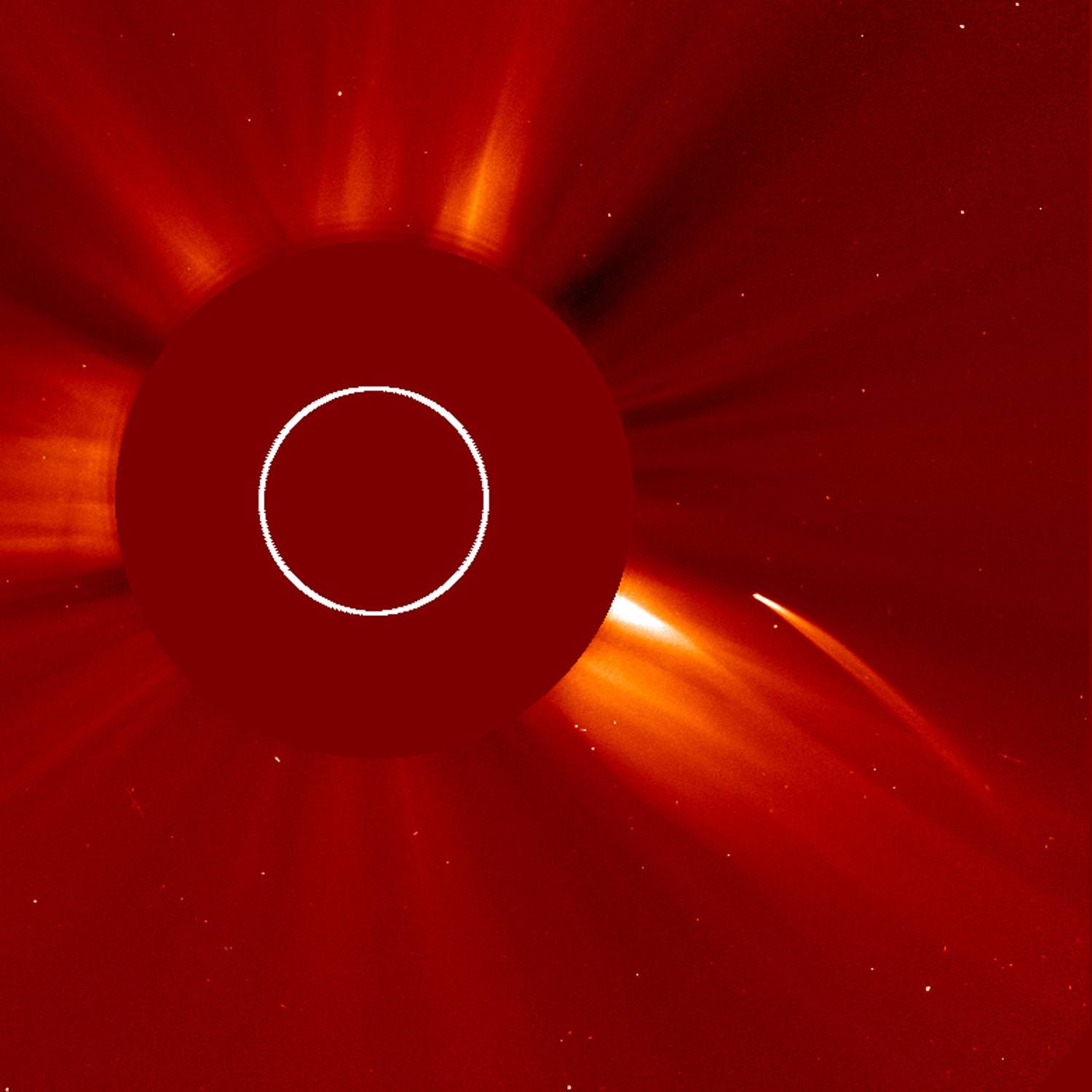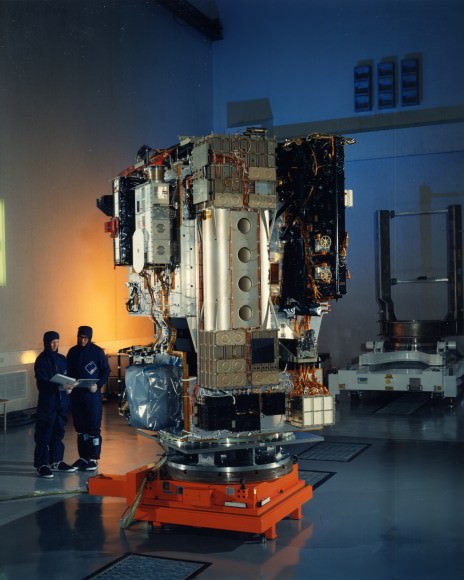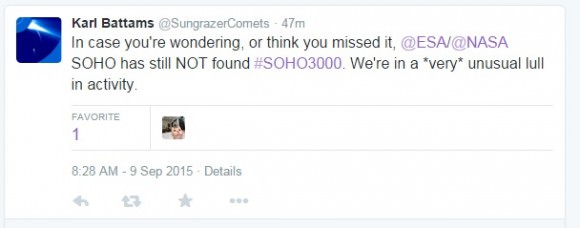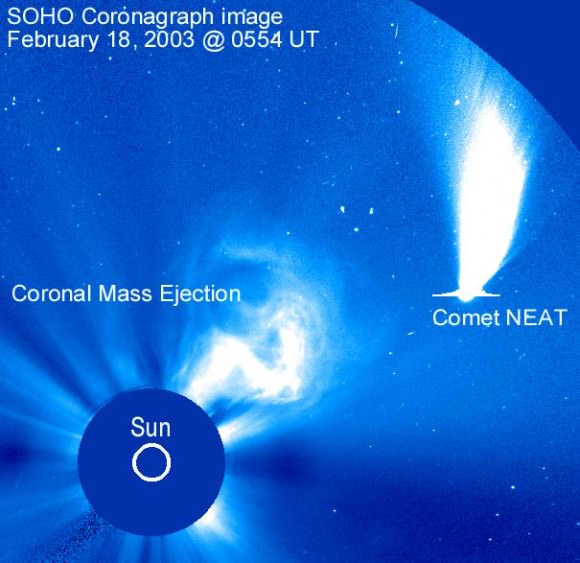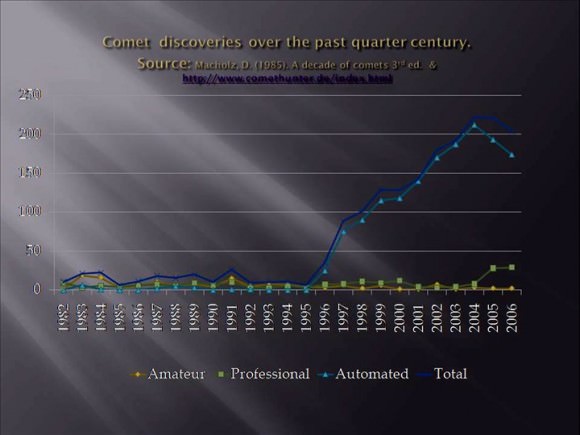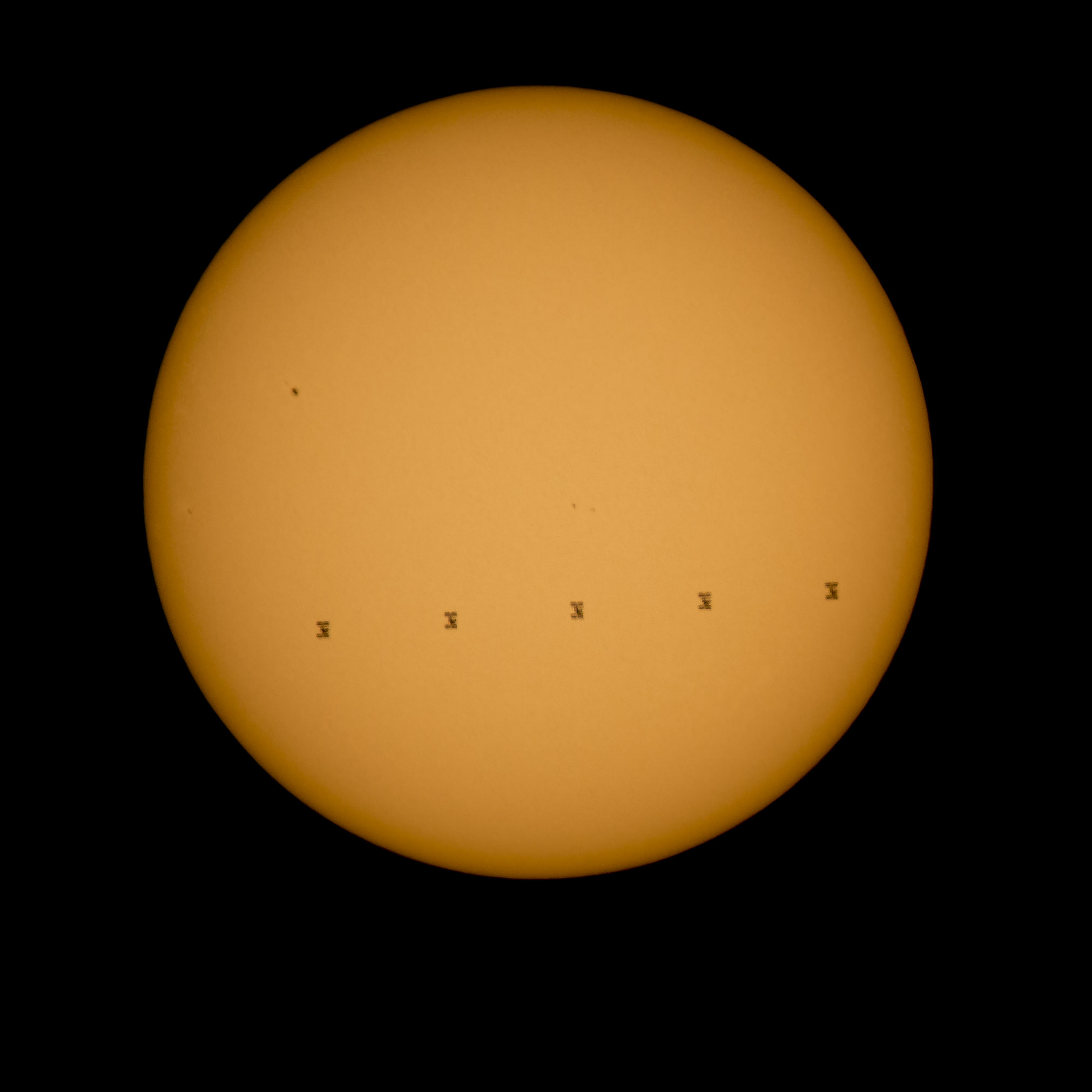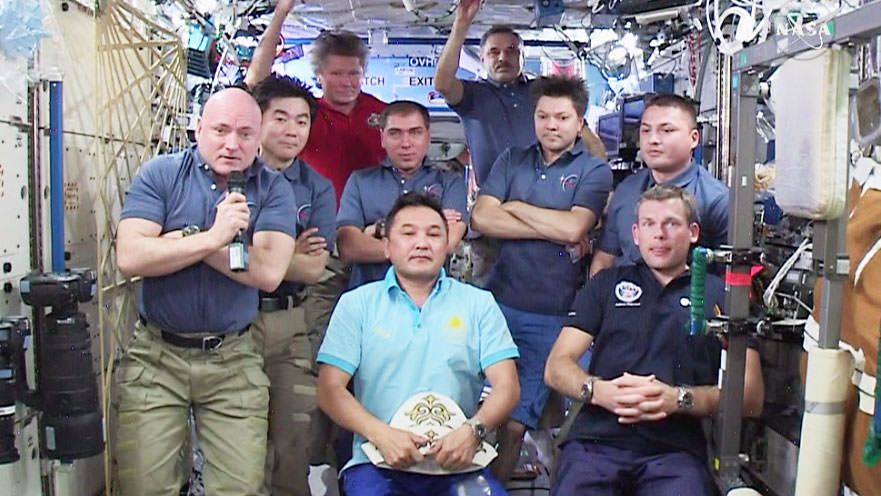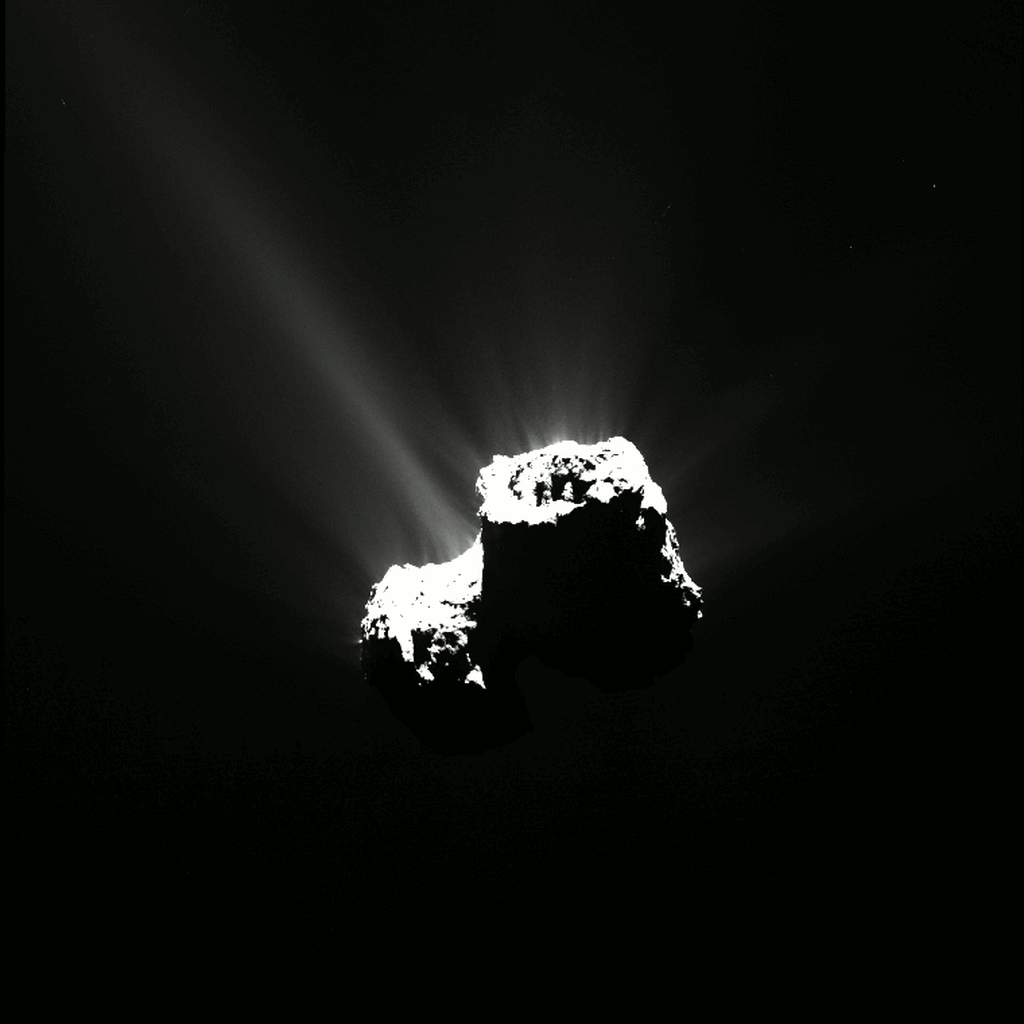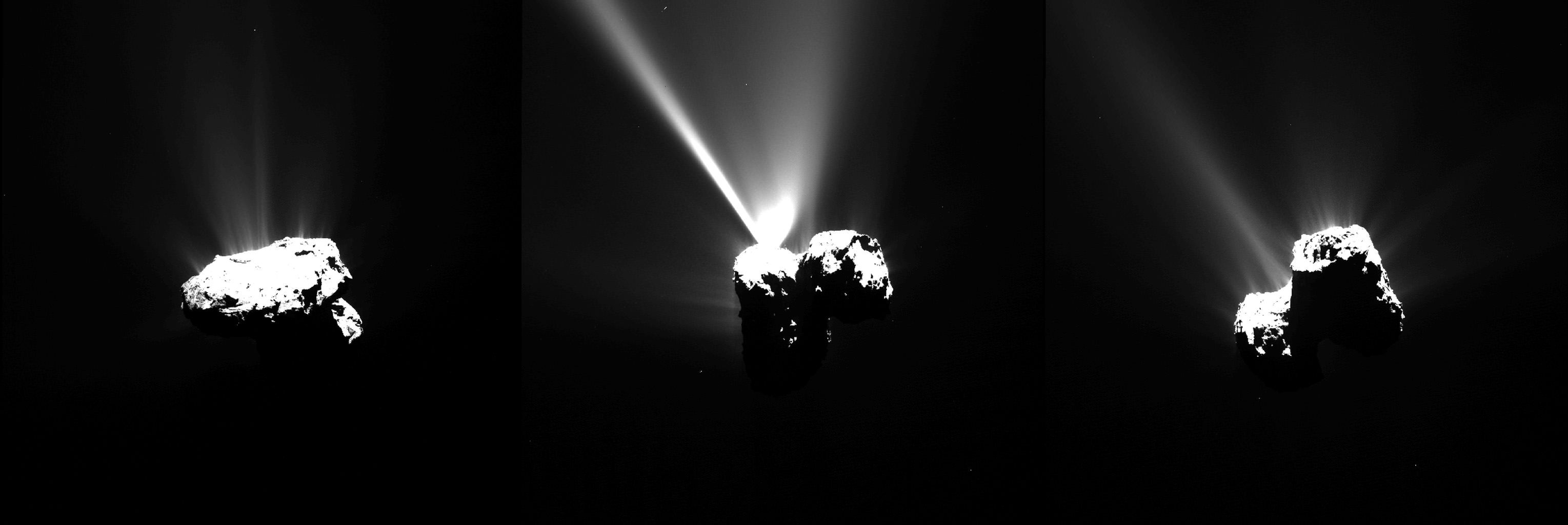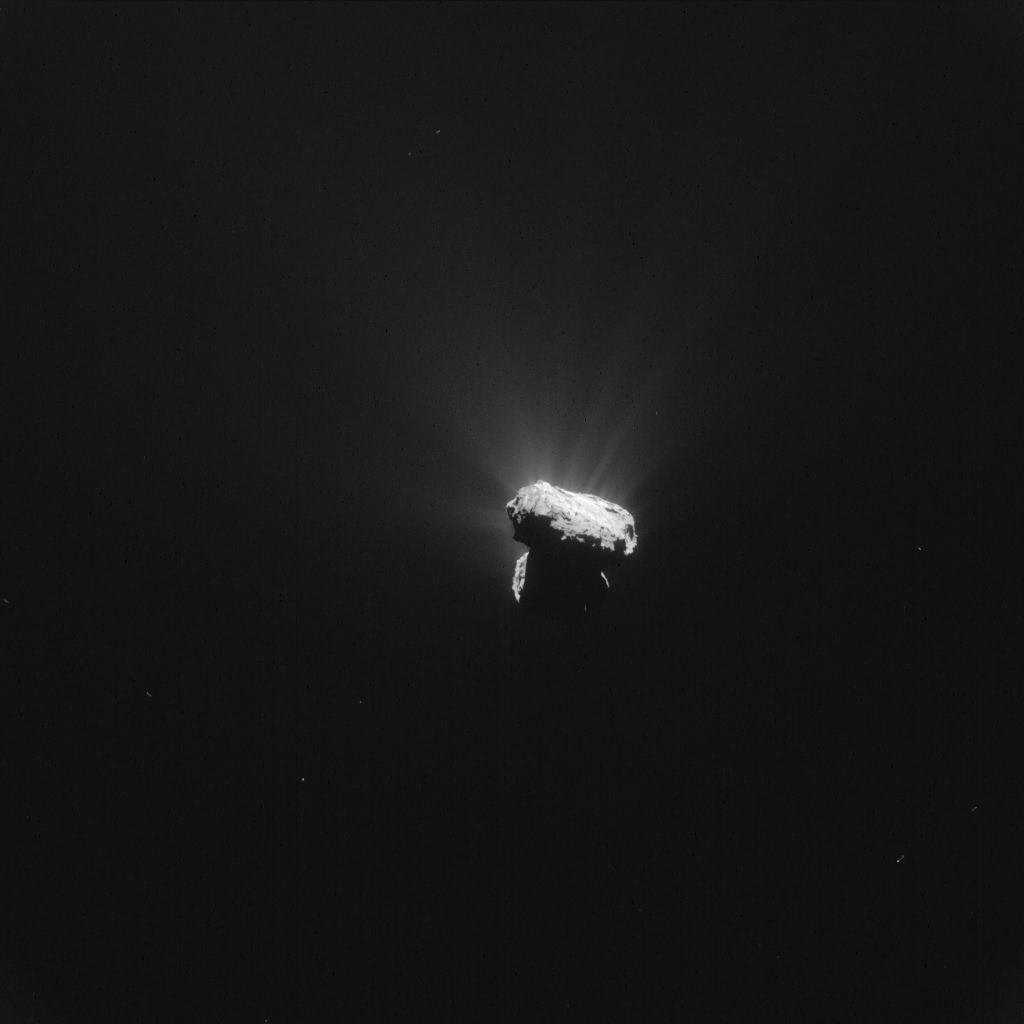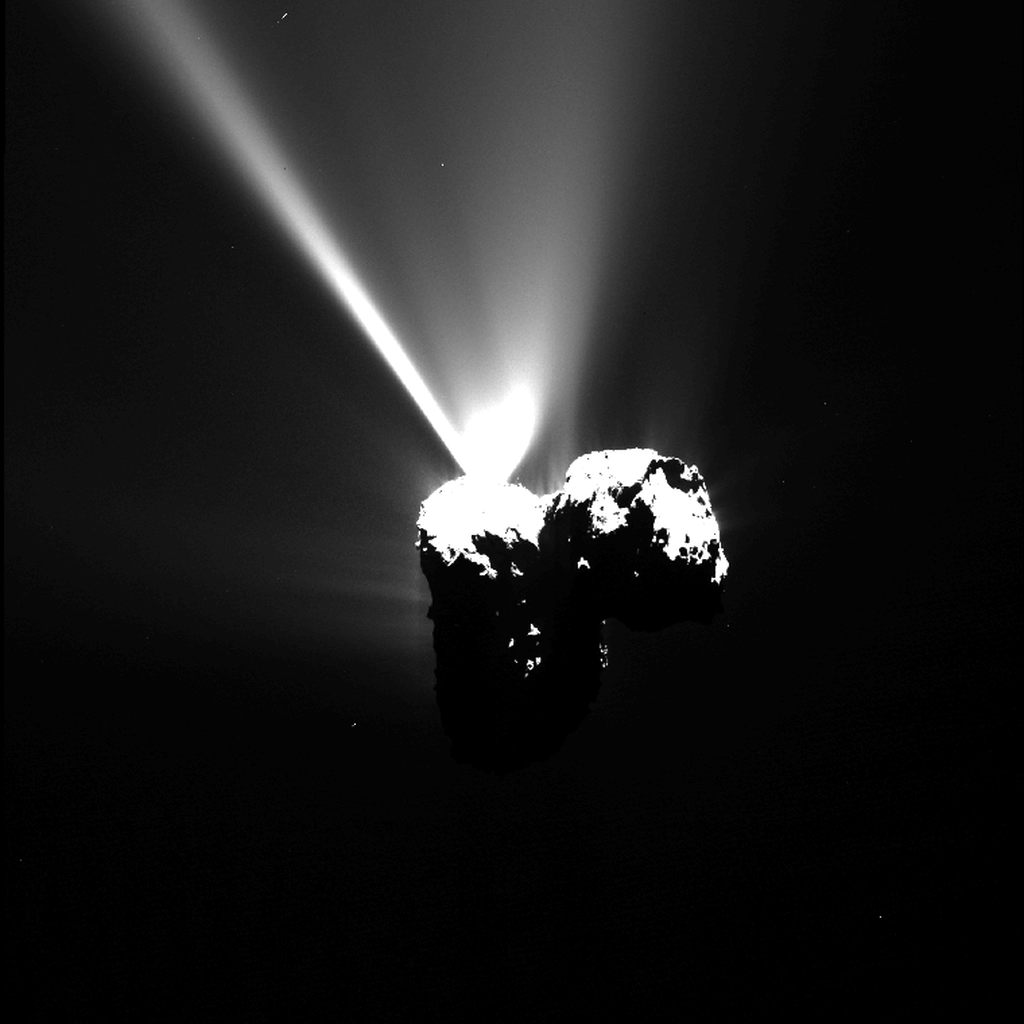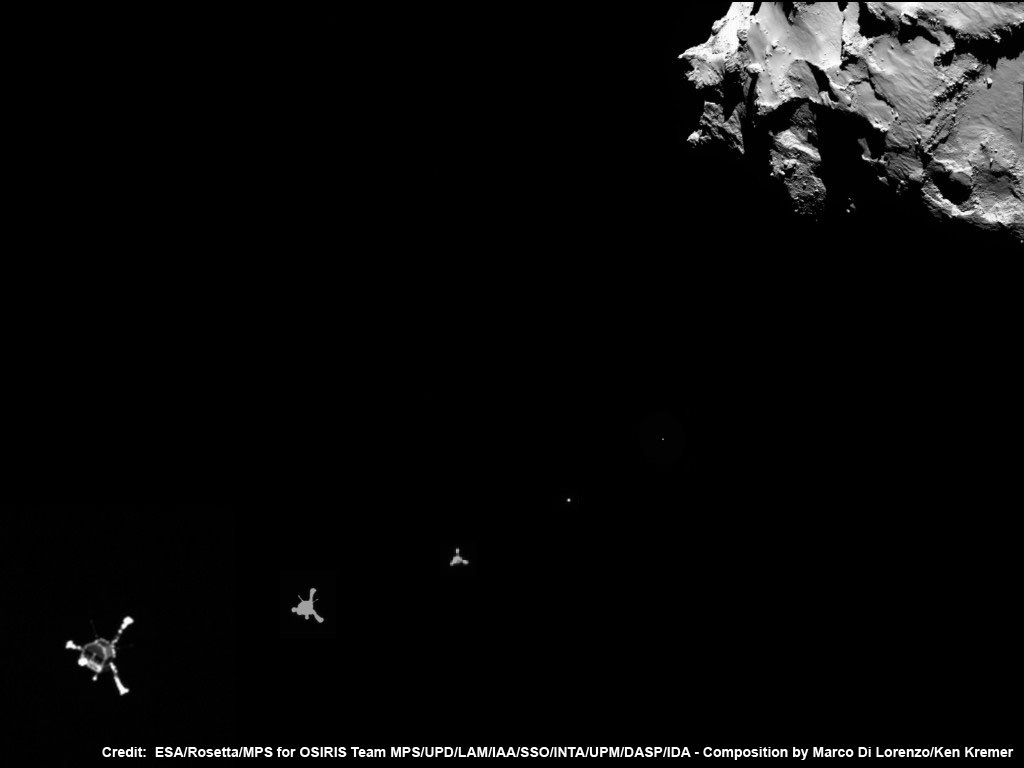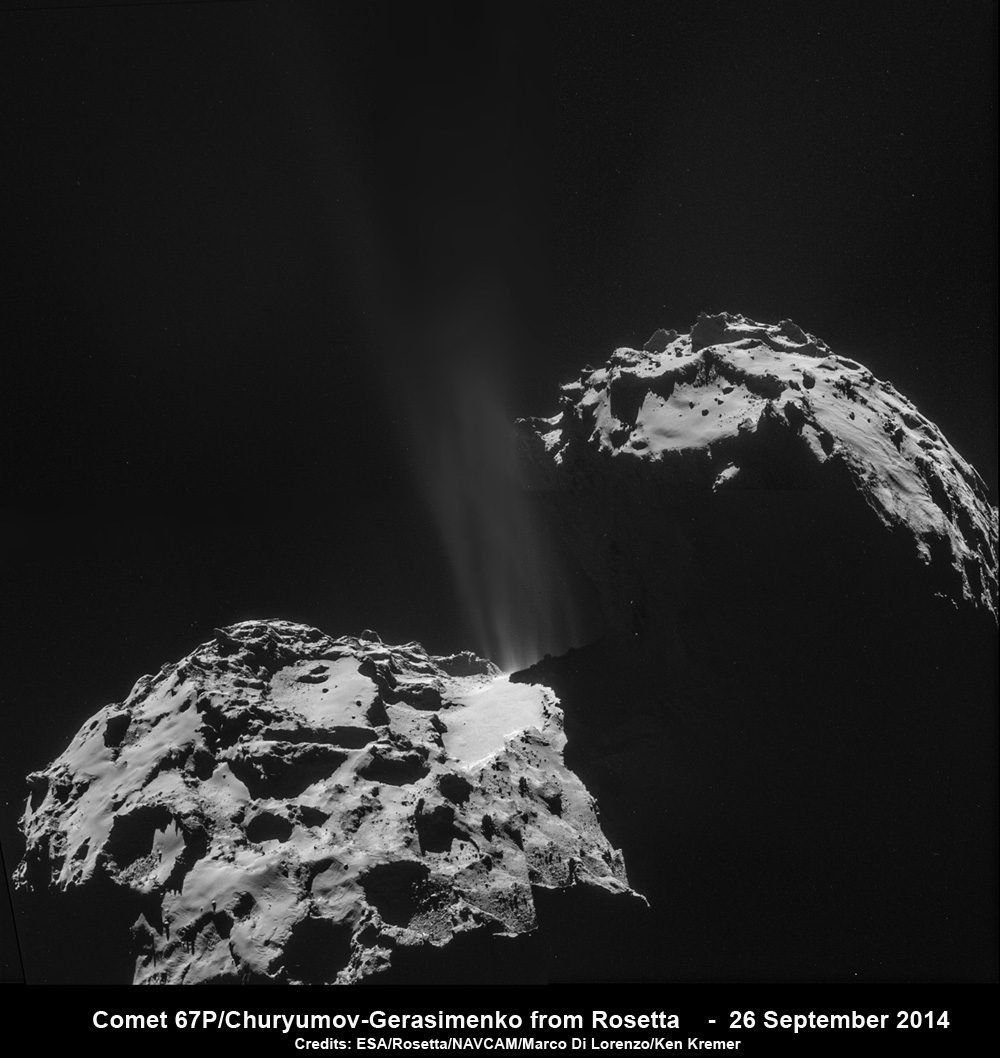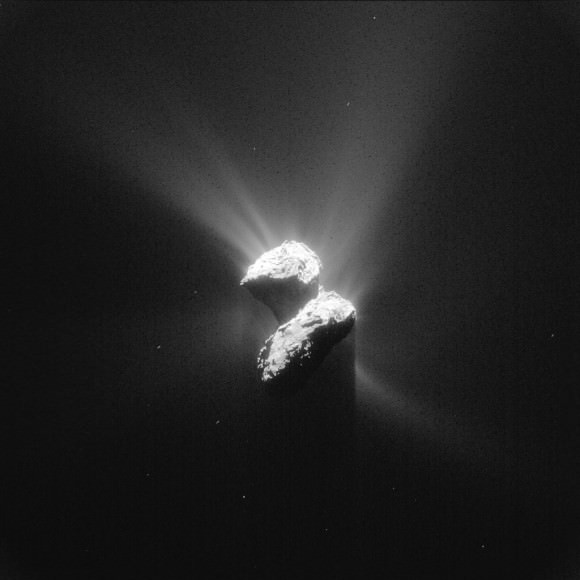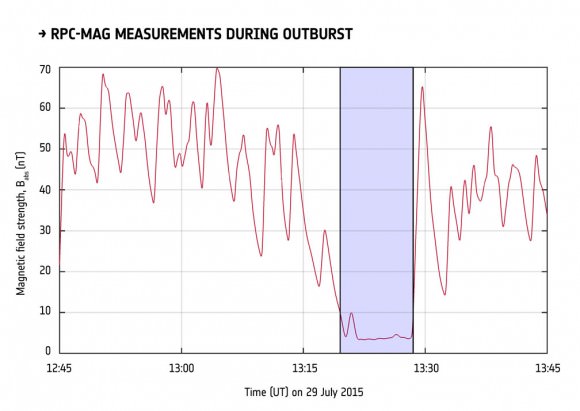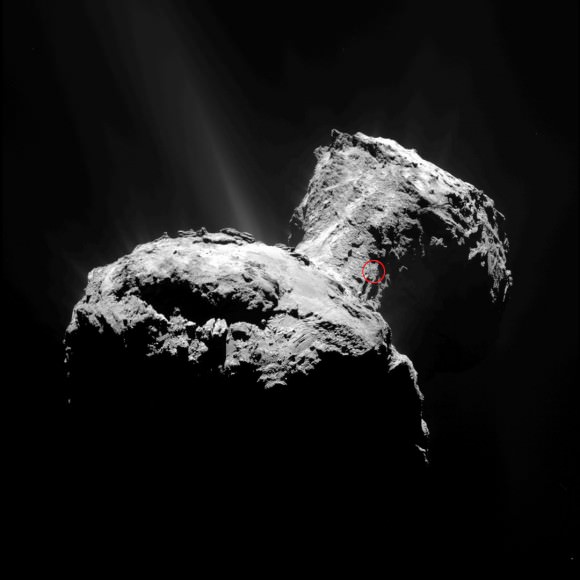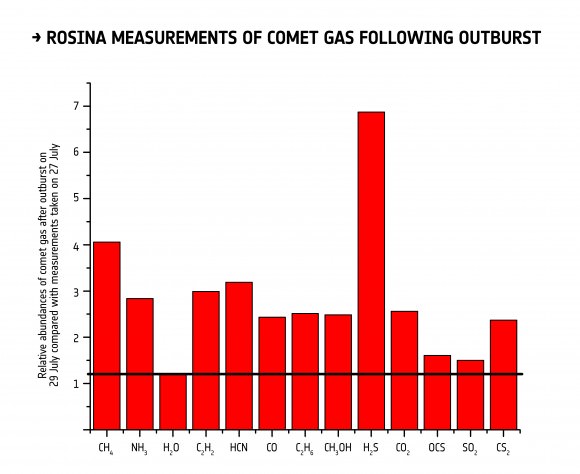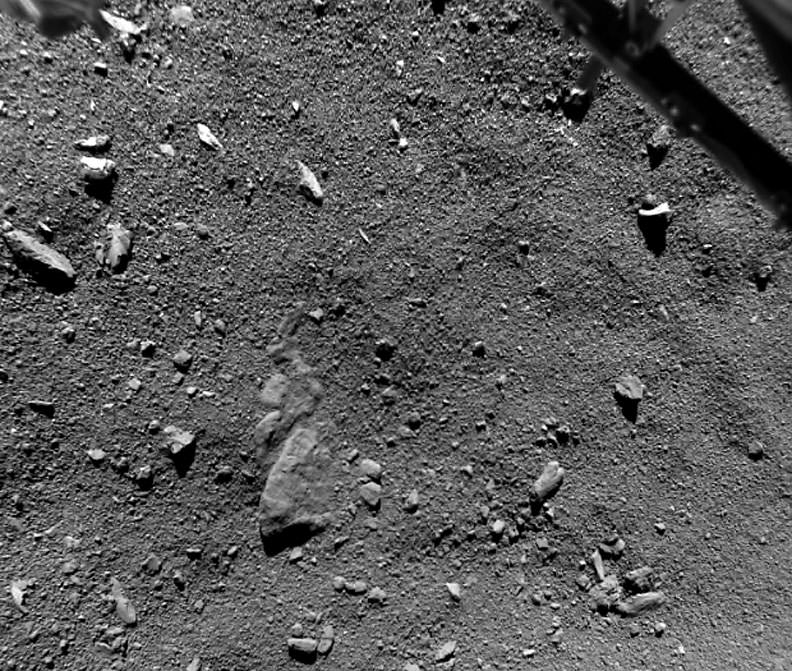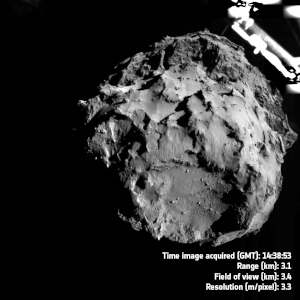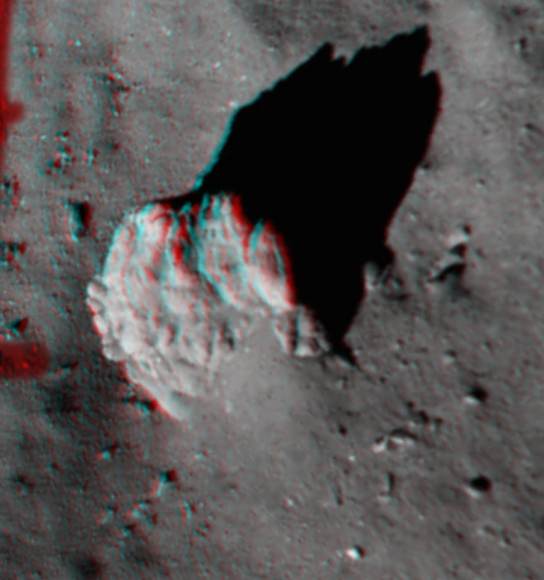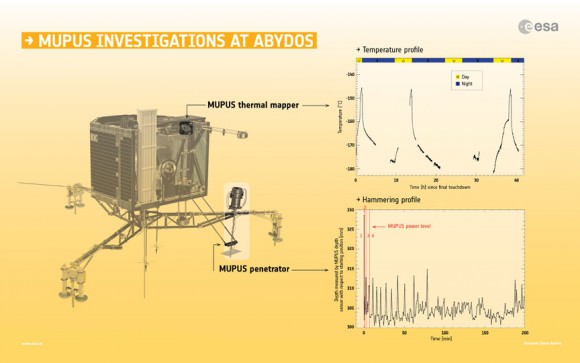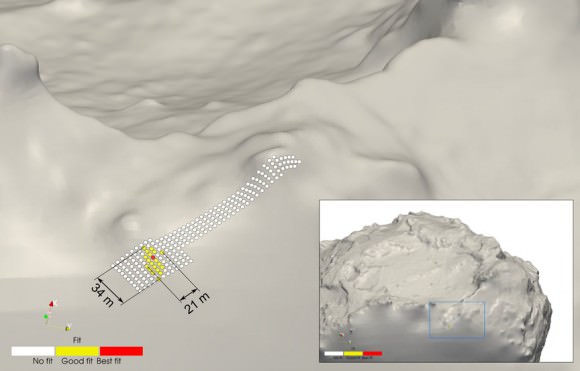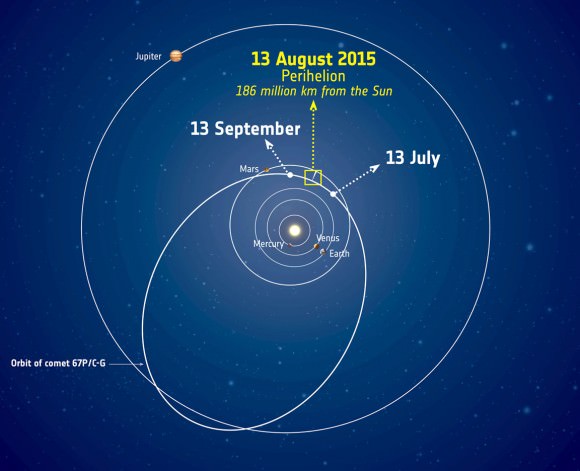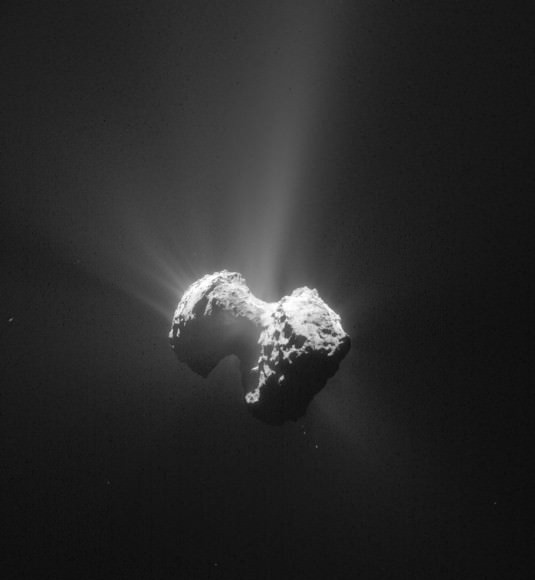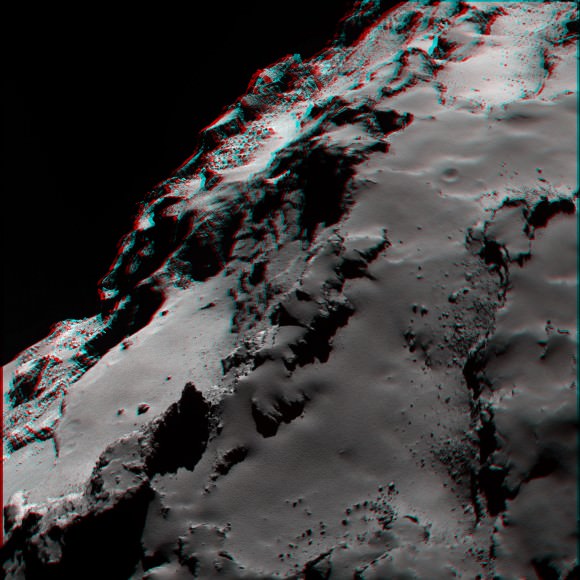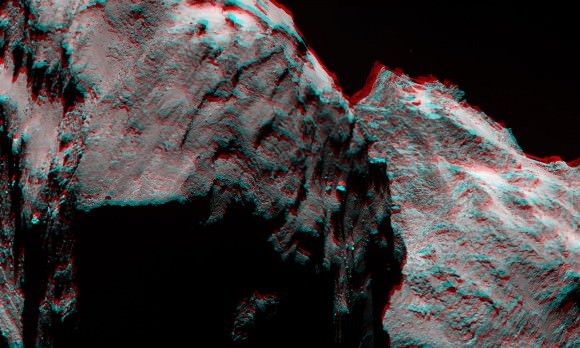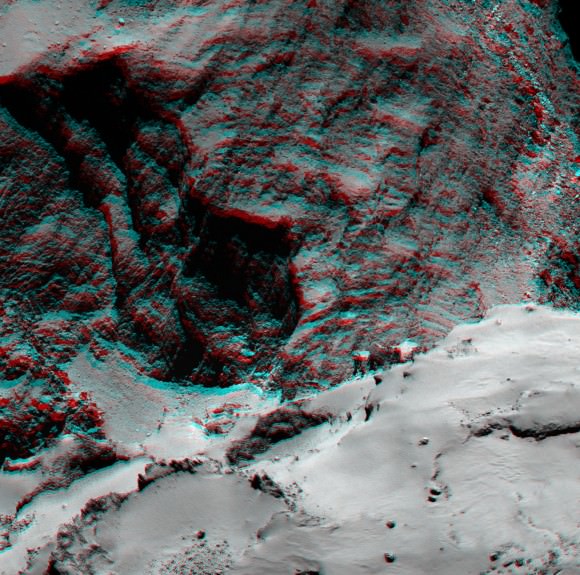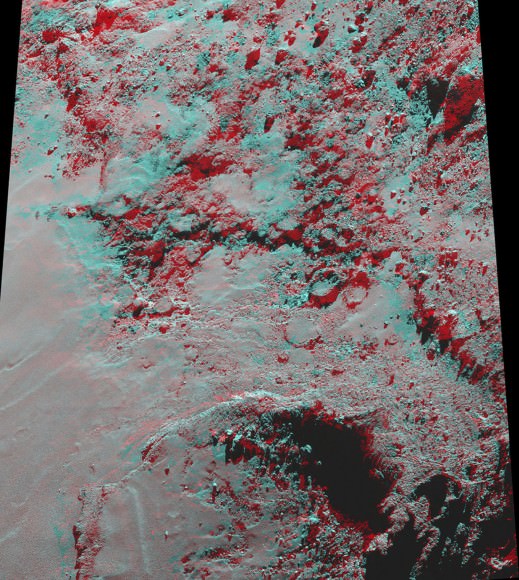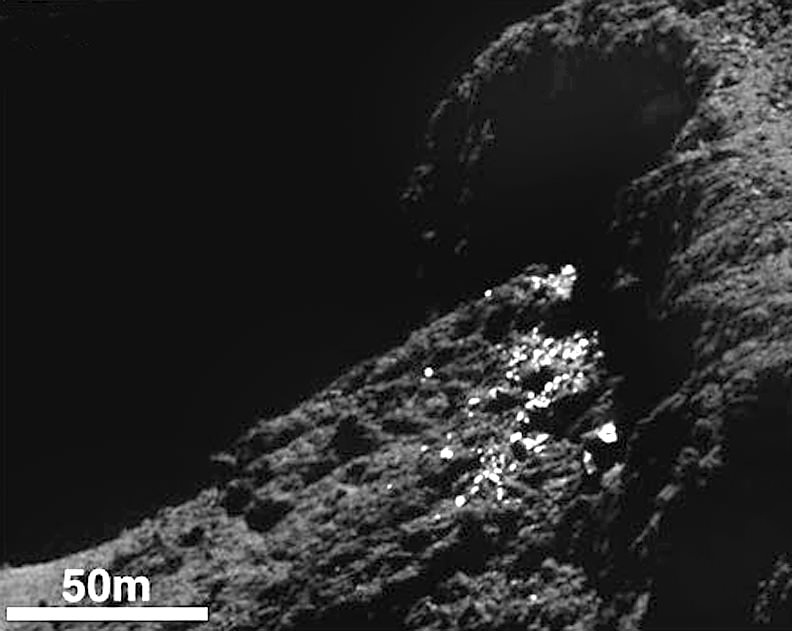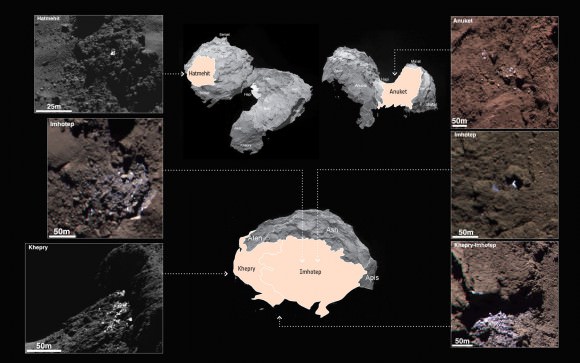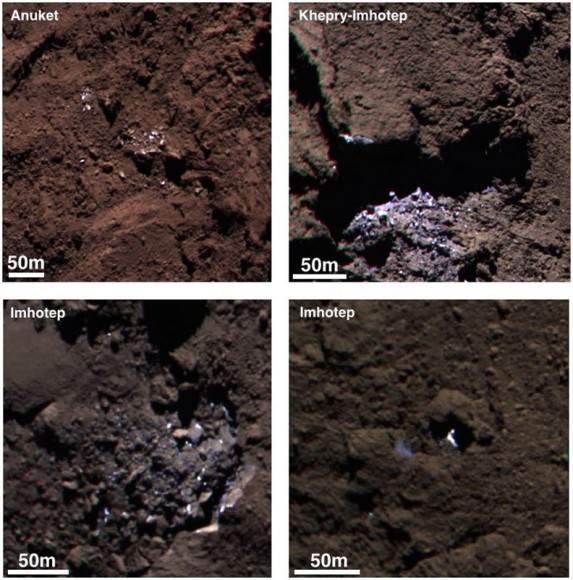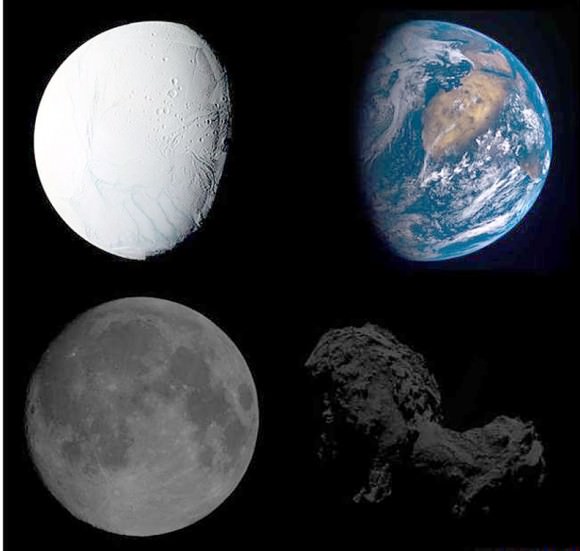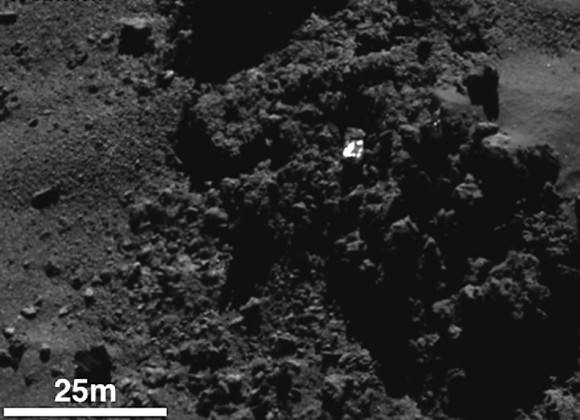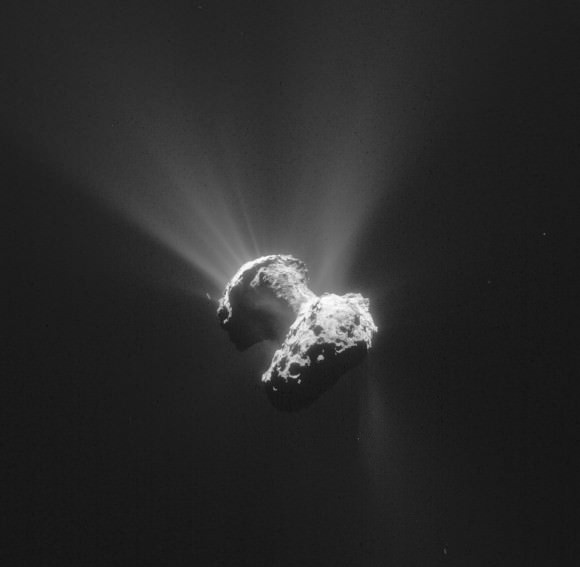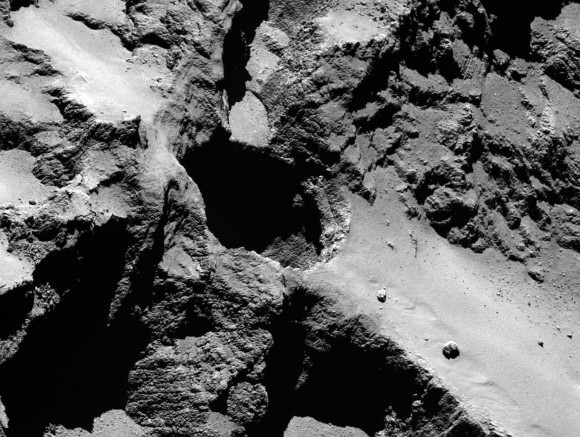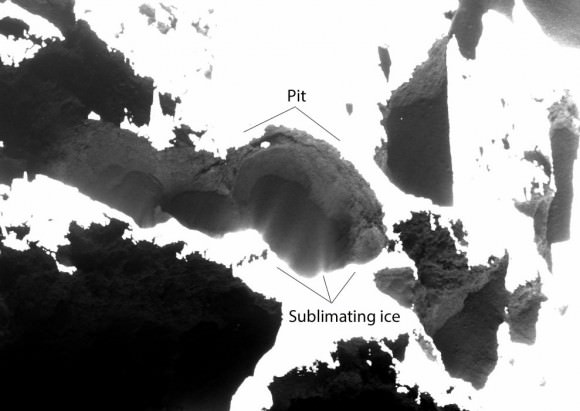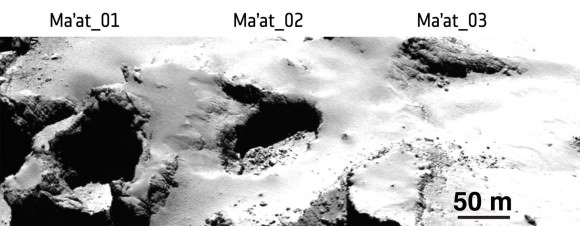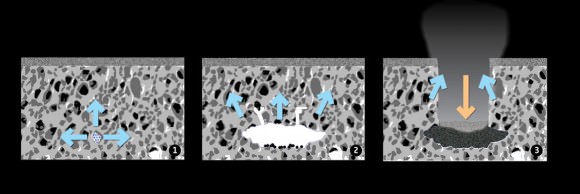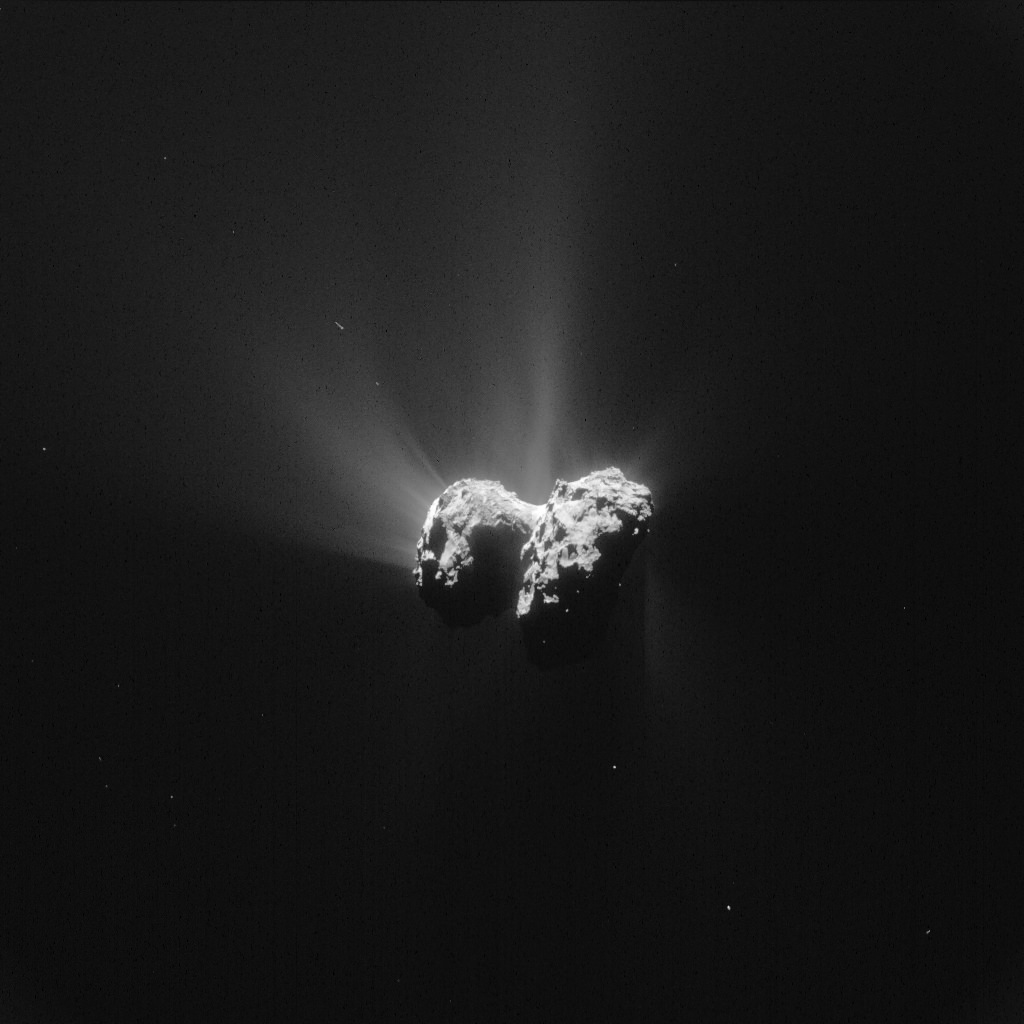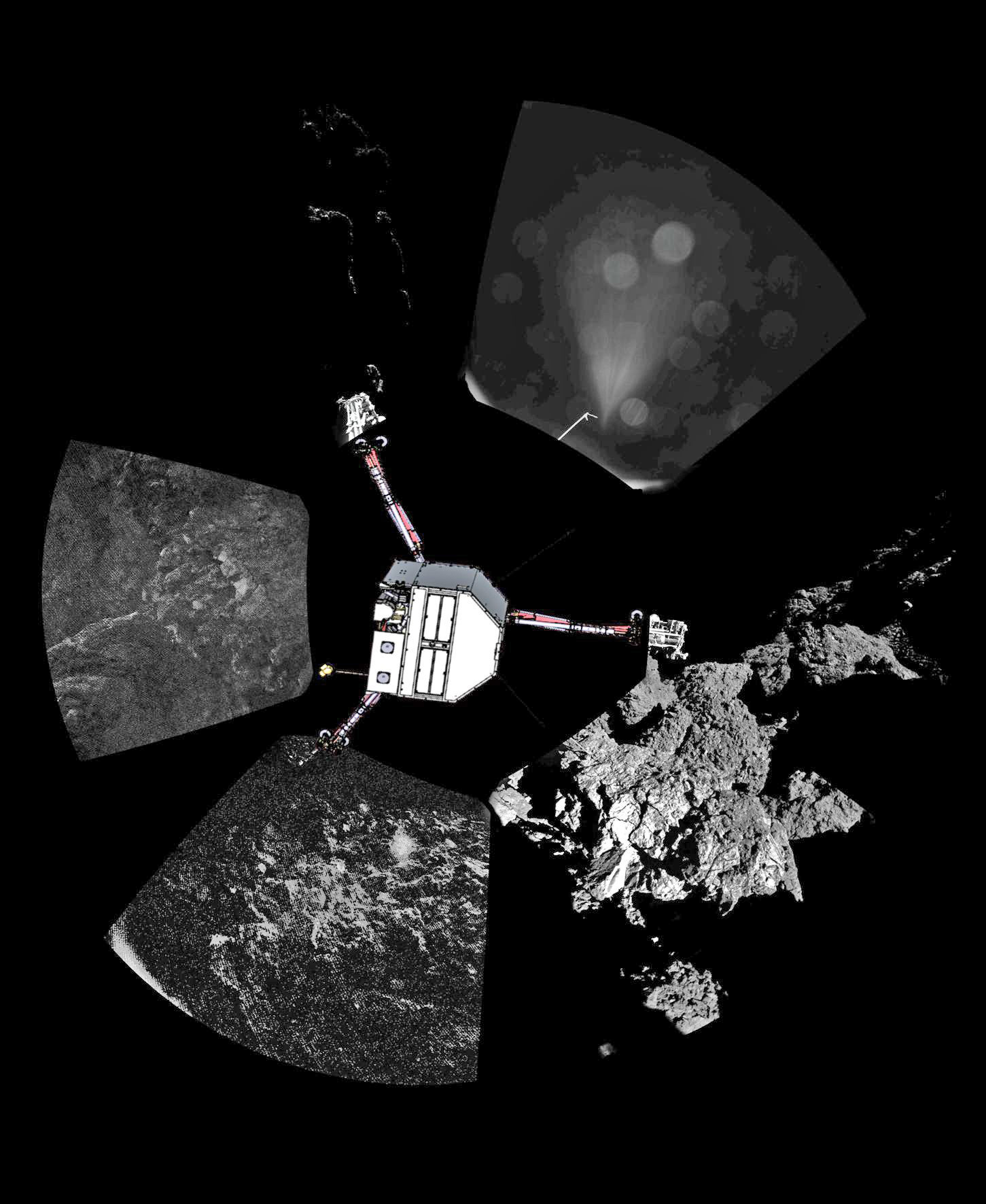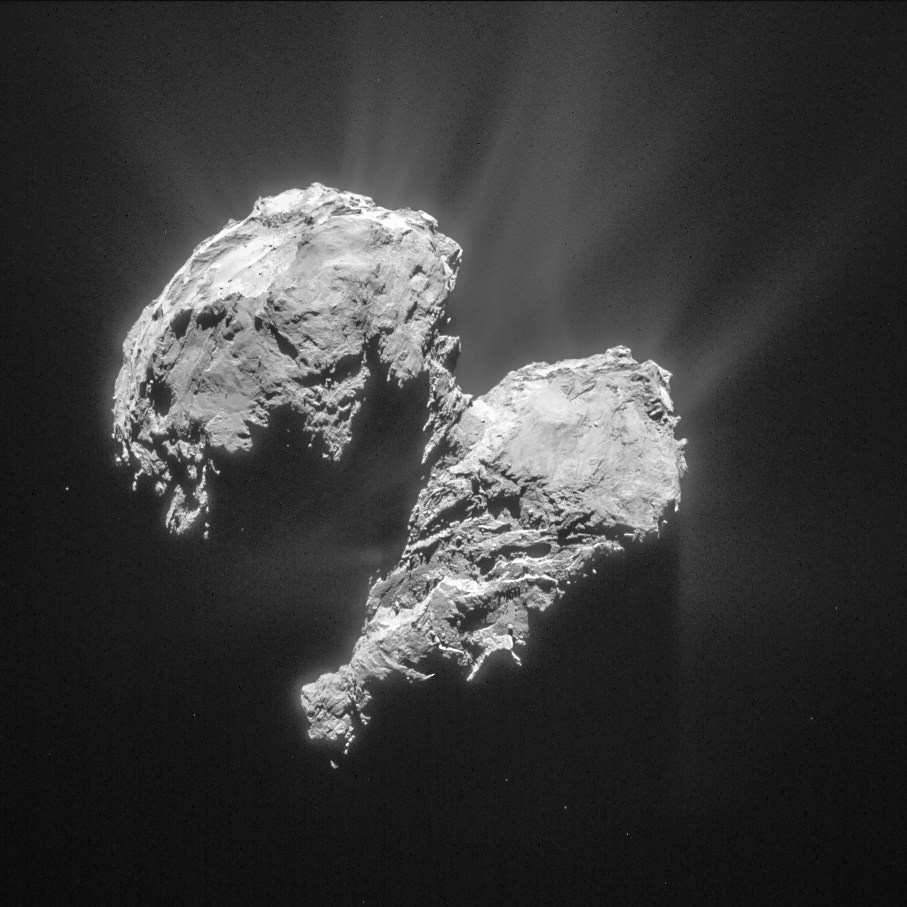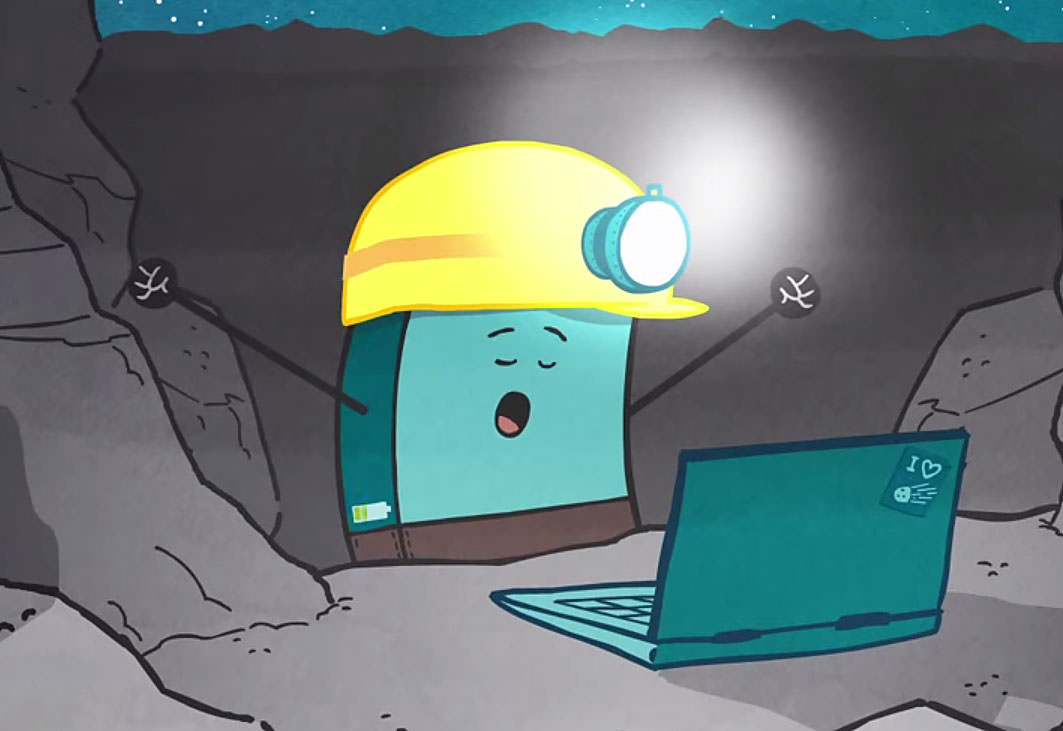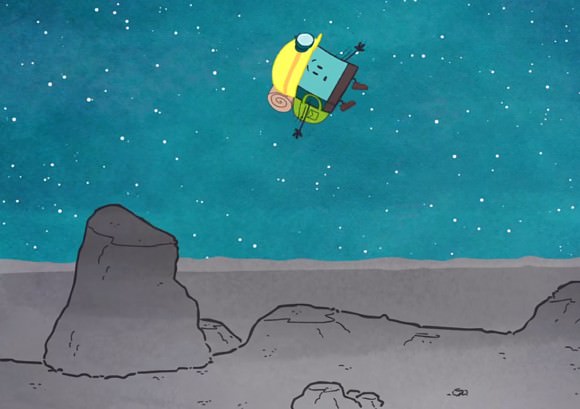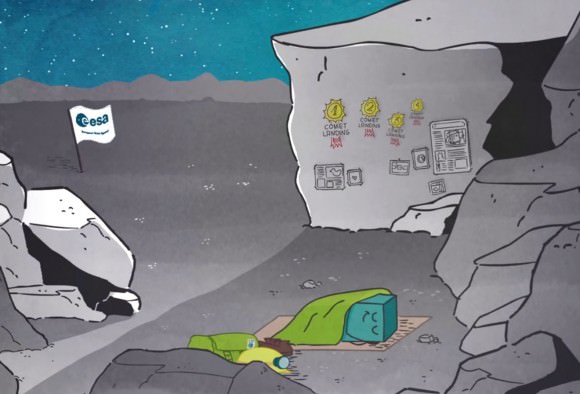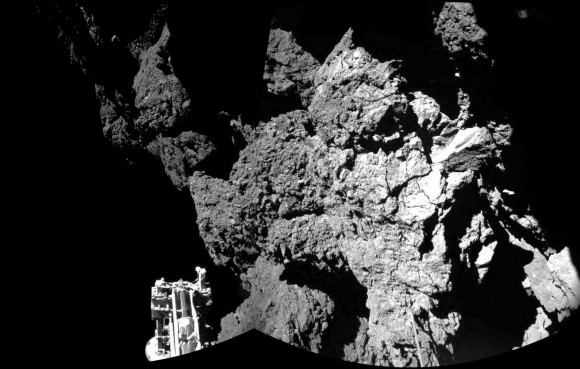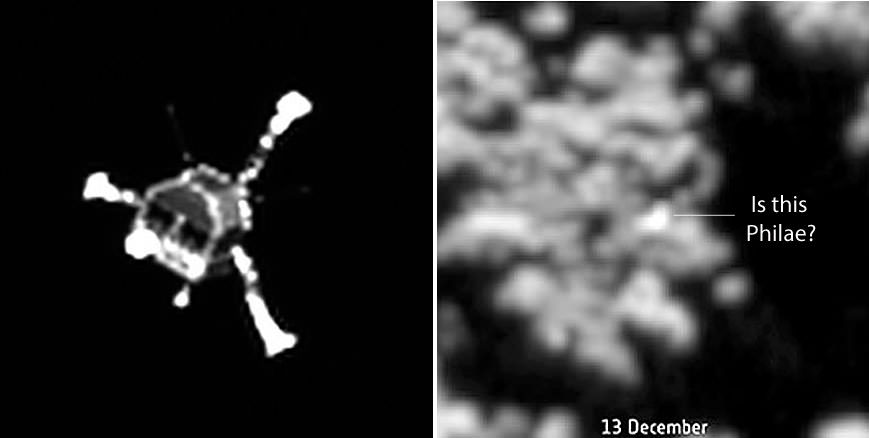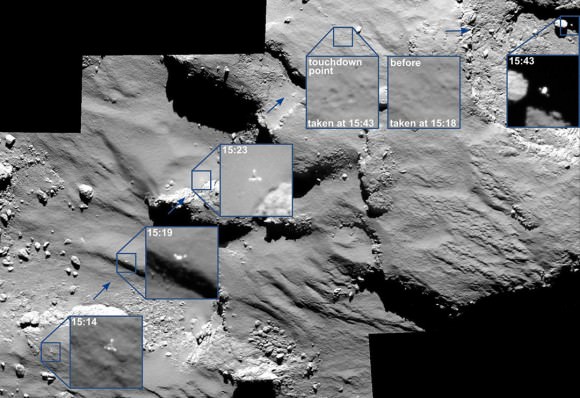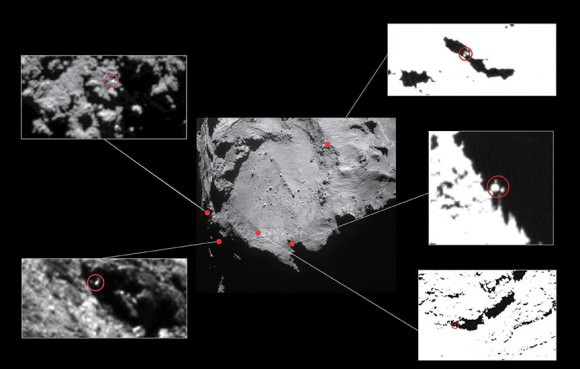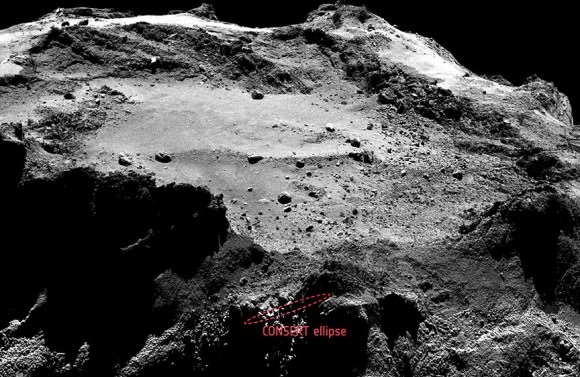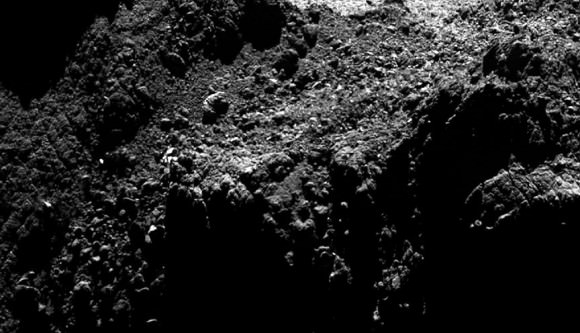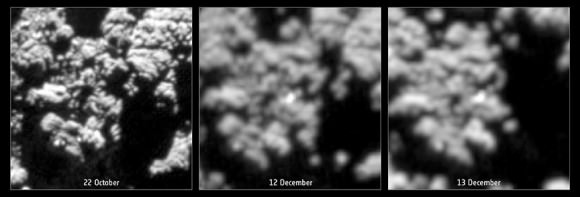View showing actual flight structure of mirror backplane unit for NASA’s James Webb Space Telescope (JWST) that holds 18 segment primary mirror array and secondary mirror mount at front, in stowed-for-launch configuration. JWST is being assembled here by technicians inside the world’s largest cleanroom at NASA Goddard Space Flight Center, Greenbelt, Md. Credit: Ken Kremer/kenkremer.com
Story/imagery updated[/caption]
NASA GODDARD SPACE FLIGHT CENTER, MD – The construction pace for NASA’s James Webb Space Telescope (JWST) took a major leap forward with delivery of the actual flight structure that serves as the observatory’s critical mirror holding backbone – to NASA’s Goddard Space Flight Center in Greenbelt, Maryland and observed by Universe Today.
“We are in good shape with the James Webb Space Telescope,” said Dr. John Mather, NASA’s Nobel Prize Winning scientist, in an exclusive interview with Universe Today at NASA Goddard during a visit to the flight structure – shown in my photos herein. Note: Read an Italian language version of this story – here at Alive Universe
And the mammoth $8.6 Billion Webb telescope has mammoth scientific objectives as the scientific successor to NASA’s Hubble Space Telescope (HST) – now celebrating its 25th anniversary in Earth orbit.
“JWST has the capability to look back towards the very first objects that formed after the Big Bang,” Mather told Universe Today.
How is that possible?
“James Webb has a much bigger mirror than Hubble. So its resolution is much better,” said astronaut and NASA science chief John Grunsfeld, during an exclusive interview at NASA Goddard. Grunsfeld flew on a trio of Hubble servicing missions aboard the Space Shuttle, including the final one during STS-125 in 2009.
“JWST can look back further in time, and a greater distance than Hubble, so we can see those first stars and galaxies formed in the Universe.”
These discoveries are only possible with Webb, which will become the most powerful telescope ever sent to space when it launches in 2018.
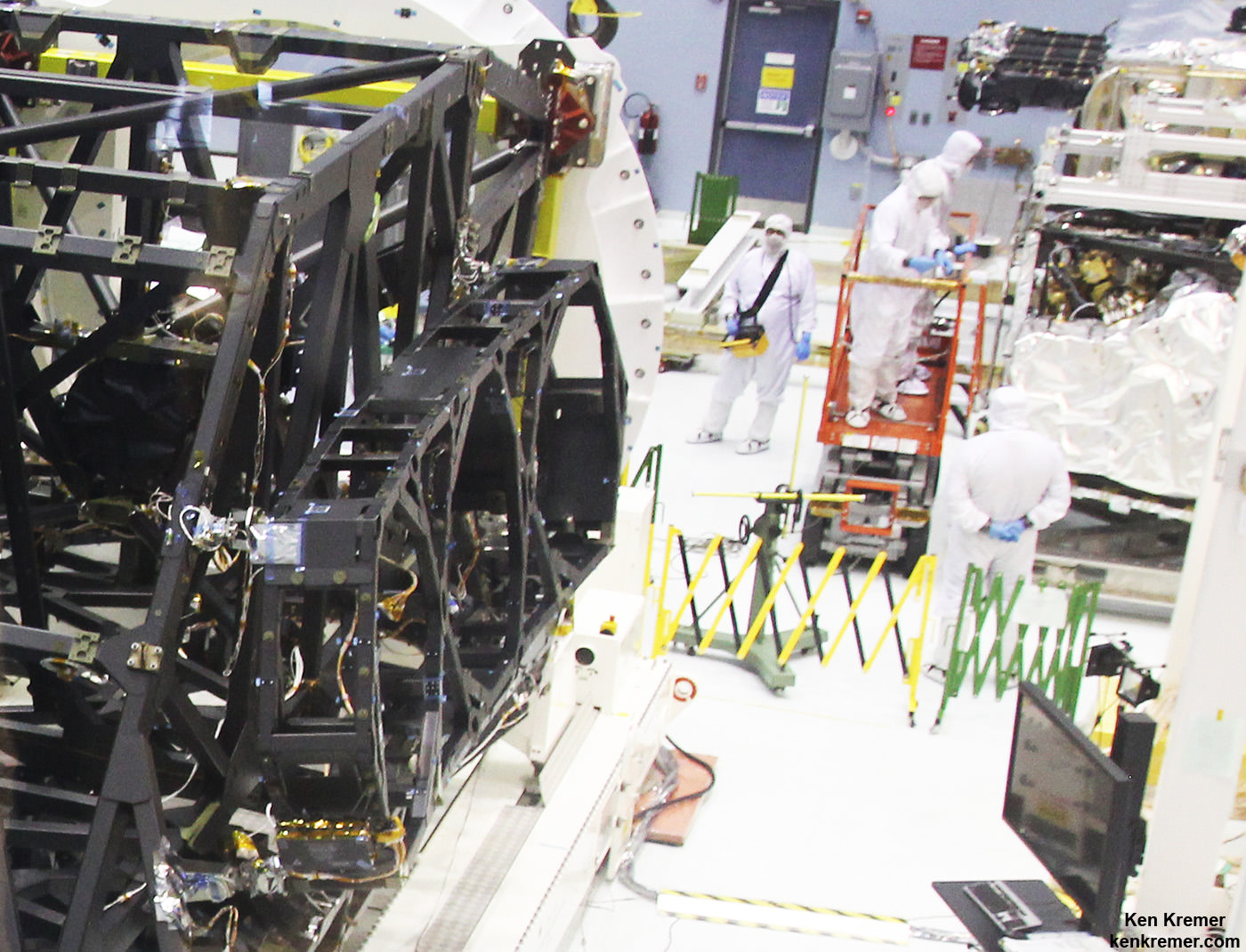
The massive JWST flight structure unit includes the “backplane assembly” that clasps in place all of the telescopes primary and secondary mirrors, as well as its ISIM science module loaded with the observatory’s quartet of state-of-the-art research instruments.
“The backplane looks really great,” Grunsfeld told me.
Numerous NASA centers and aerospace companies are involved in building the observatory and its backplane structure holding the mirrors that will search back some 13.4 billion years.
“The backplane structure just arrived in late August from Northrop Grumman Aerospace Systems in Redondo Beach, California,” said Sandra Irish, JWST lead structural engineer during an interview with Universe Today at the NASA Goddard cleanroom facility.
“This is the actual flight hardware.”
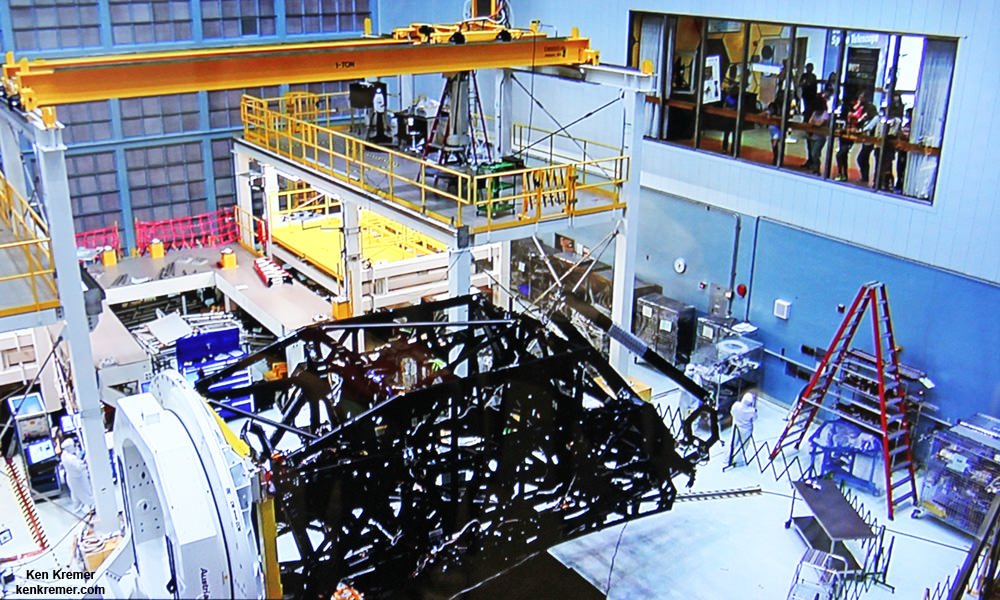
The purpose of JWST’s backplane assembly is to hold the telescopes 18 segment, 21-foot (6.5-meter) diameter primary mirror nearly motionless while floating in the utterly frigid space environment, thereby enabling the observatory to peer out into deep space for precise science gathering measurements never before possible.
The massive telescope structure “includes the primary mirror backplane assembly; the main backplane support fixture; and the deployable tower structure that lifts the telescope off of the spacecraft. The three arms at the top come together into a ring where the secondary mirror will reside,” say officials.
The backplane traveled a long and winding road before arriving at Goddard.
“The backplane structure was designed and built at Orbital ATK with NASA oversight,” Irish explained. The assembly work was done at the firms facilities in Magna, Utah.
“Then it was sent to Northrop Grumman in Redondo Beach, California for static testing. Then it came here to Goddard. Orbital ATK also built the composite tubes for the ISIM science module structure.”
The observatory’s complete flight structure measures about 26 feet (nearly 8 meters) from its base to the tip of the tripod arms and mirror mount holding the round secondary mirror.
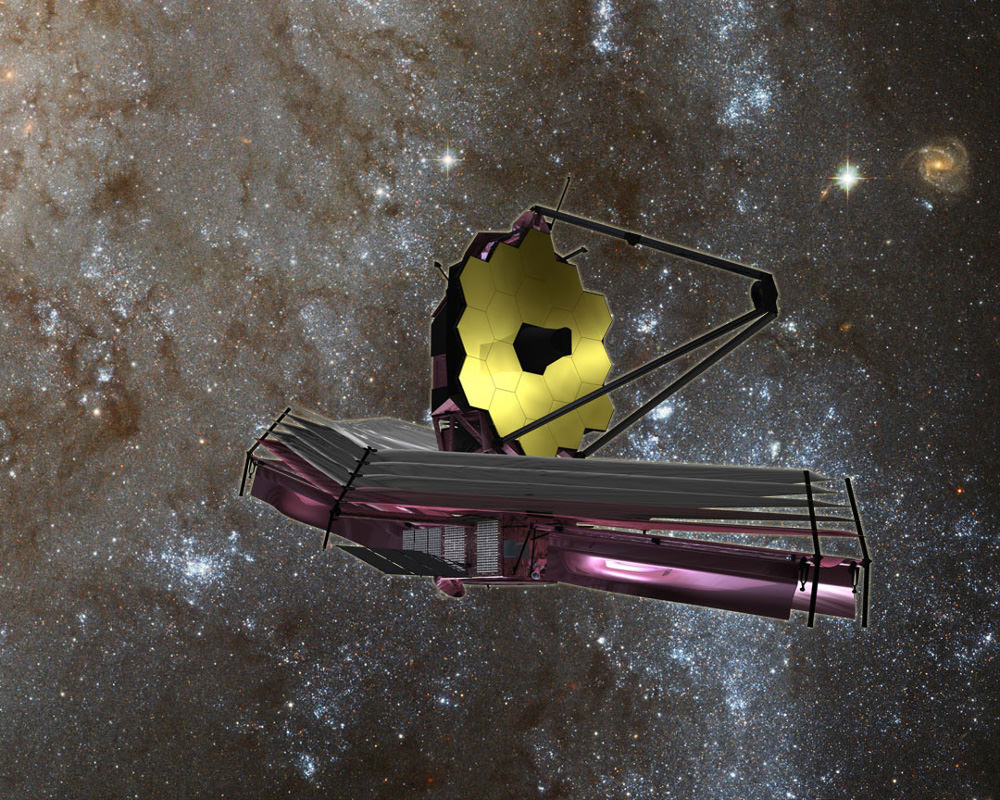
The flight structure and backplane assembly arrived at Goddard in its stowed-for-launch configuration after being flown cross country from California.
“It is here for the installation of all the mirrors to build up the entire telescope assembly here at Goddard. It will be fully tested here before it is delivered to the Johnson Space Center in Houston and then back to California,” Irish elaborated.
The overall assembly is currently attached to a pair of large yellow and white fixtures that firmly secure the flight unit, to stand it upright and rotate as needed, as it undergoes acceptance testing by engineers and technicians before commencement of the next big step – the crucial mirror installation that starts soon inside the world’s largest cleanroom at NASA Goddard.
Overhead cranes are also used to maneuver the observatory structure as engineers inspect and test the unit.
But several weeks of preparatory work are in progress before the painstakingly precise mirror installation can begin under the most pristine cleanroom operating conditions.
“Right now the technicians are installing harnesses that we need to mount all over the structure,” Irish told me.
“These harnesses will go to our electronic systems and the mirrors in order to monitor their actuation on orbit. So that’s done first.”
What is the construction sequence at Goddard for the installation of the mirrors and science instruments and what comes next?
“This fall we will be installing every mirror, starting around late October/early November. Then next April 2016 we will install the ISIM science module inside the backplane structure.”
“The ISIM mounts all four of the telescope science instrument. So the mirrors go on first, then the ISIM gets installed and then it will really be the telescope structure.” ISIM carries some 7,500 pounds (2400 kg) of telescope optics and instruments.
“Then starting about next July/August 2016 we start the environmental testing.”
The actual flight mirror backplane is comprised of three segments – the main central segment and a pair of outer wing-like parts holding three mirrors each. They will be unfolded from the stowed-for-launch configuration to the “deployed” configuration to carry out the mirror installation. Then be folded back over into launch configuration for eventual placement inside the payload fairing of the Ariane V ECA booster rocket.
The telescope will launch from the Guiana Space Center in Kourou, French Guiana in 2018.

The telescopes primary and secondary flight mirrors have already arrived at Goddard.
The mirrors must remained precisely aligned and nearly motionless in order for JWST to successfully carry out science investigations. While operating at extraordinarily cold temperatures between -406 and -343 degrees Fahrenheit the backplane must not move more than 38 nanometers, approximately 1/1,000 the diameter of a human hair.
To account for the tiniest of errors and enhance science, each of the primary mirrors is equipped with actuators for minute adjustments.
“A beautiful advantage of Webb that’s different from Hubble is the fact that we do have actuation [capability] of every single one of our mirrors. So if we are off by just a little bit on either our calculations or from misalignment from launch or the zero gravity release, we can do some fine adjustments on orbit.”
“We can adjust every mirror within 50 nanometers.”
“That’s important because we can’t send astronauts to fix our telescope. We just can’t.”
“The telescope is a million miles away.”
NASA’s team at Goddard has already practiced mirror installation because there are no second chances.
“We only have one shot to get this right!” Irish emphasized.
Watch for more on the mirror installation in my upcoming story.
JWST is the successor to the 25 year old Hubble Space Telescope and will become the most powerful telescope ever sent to space.
Webb is designed to look at the first light of the Universe and will be able to peer back in time to when the first stars and first galaxies were forming.
The Webb Telescope is a joint international collaborative project between NASA, the European Space Agency (ESA) and the Canadian Space Agency (CSA).
NASA has overall responsibility and Northrop Grumman is the prime contractor for JWST.
“The telescope is on schedule for its launch in 2018 in October,” Mather told me.
And the payoff from JWST will be monumental!
“On everything from nearby planets to the most distant universe, James Webb will transform our view of the Universe,” Grunsfeld beams.
Watch for more on JWST construction and mirror installation in part 2 soon.
Stay tuned here for Ken’s continuing Earth and Planetary science and human spaceflight news.
